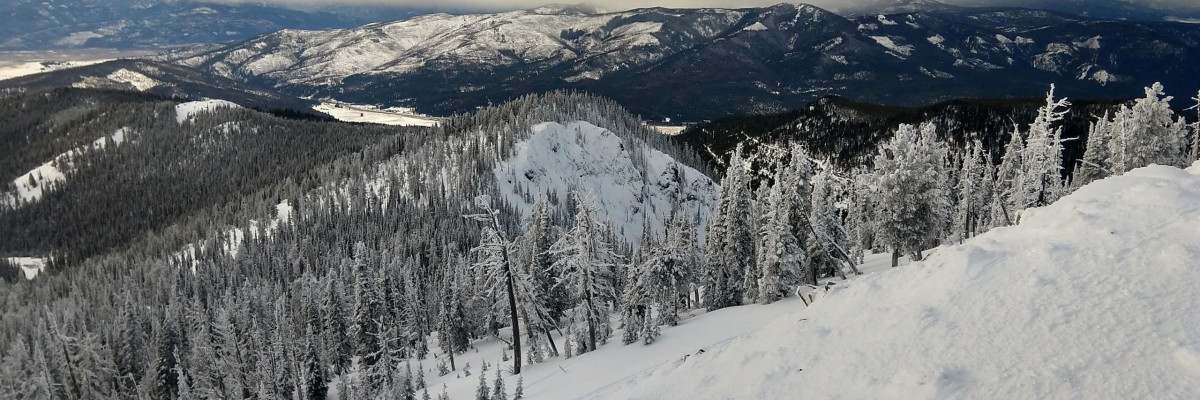The avalanche danger in the west central Montana backcountry is Moderate, with caution.
Good morning; this is Jeff Carty with the West Central Montana Avalanche Center’s avalanche advisory for January 2, 2021. This advisory does not apply to operating ski areas, expires at midnight tonight, and is the sole responsibility of the U.S. Forest Service.
Weather and Snowpack
Mountain temperatures are 18º to 29º F this morning and are forecast to reach the low 30’s today. Up to 3″ of snow has fallen in the last 24 hours. 1″-2″ more is expected today with snowfall continuing through Sunday night. Westerly winds have been moderate with strong gusts and are expected to reach 18mph with gusts to 36 mph today, increasing to 55mph at ridge top this evening.
The last round of snowfall deposited between 6” and up to 20” of snow. This bonded well in the areas we toured yesterday, despite widespread surface hoar from the clear nights preceding the storm. However, pockets of reactive unbonded surface hoar likely exist. Wind slab was created but is now bonded well. We couldn’t get any to move yesterday despite crowns from recent natural wind slab avalanches in the Rattlesnake.
Our current round of snow will likely not be heavy enough to create problems today. However, winds are creating wind slab problems on steep leeward slopes. Snow intensity will increase tonight and Sunday and avalanche hazard will rise as a result.
The underlying snowpack is varied throughout the forecast area. Deeper areas have better bonding and instabilities are isolated to the new snow/old snow interface. The central Bitterroot has been the most stable zone in the past week.
In shallow areas, generally under 5 feet in depth, the snowpack structure is still poor. Facets and crust combinations are creating sliding layers. We had propagation in pits with moderate to strong force in the southern Bitterroot, Lolo Pass, and the Rattlesnake yesterday. It is possible to trigger slab avalanches on these layers. They are becoming a low likelihood, high consequence problem. With thicknesses up to 2 feet, these are not slabs to mess with. It’s best to stick to low angle slopes and simple terrain in these areas.
The southern Missions and Swans received the brunt of the last storm with 1.6” of snow water equivalent (SWE), up to 20” of snow, a huge load for an area that had faceted snow problems and surface hoar. The northern Swans had a widespread avalanche cycle following the storm. Take care if you are riding in this area and assess slopes carefully. Simple terrain and low angle slopes are good choices as the area receives more snow in the coming days.
Bottom Line
Windslab will be increasing in size throughout the day, avoid steep wind loaded start zones. Human triggered avalanches are possible. Snow pits and stability tests are essential for identifying the presence of faceted layers and their reactivity. Simple, low angle terrain is advised where persistent slabs exist. Travel one at a time in avalanche terrain, carry a beacon, shovel, and probe. Re-assess conditions throughout the day and stay alert for red flags.
Public Observations
We generate avalanche forecasts for a 1,420 square mile area that stretches from Lost Trail Pass to just north of Seeley Lake. We work hard to keep you informed of current avalanche dangers but, we can’t see everything. Your snowpack and weather observations help us fill in the gaps and produce a more accurate forecast. If you get out, please take a moment to fill out the online observation form.
Ski and ride safe.














